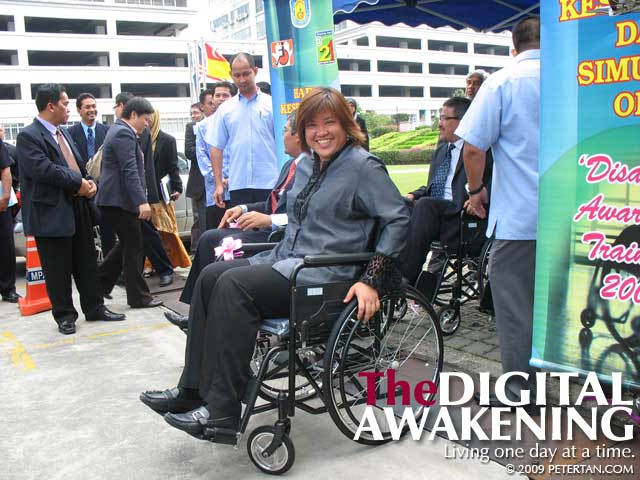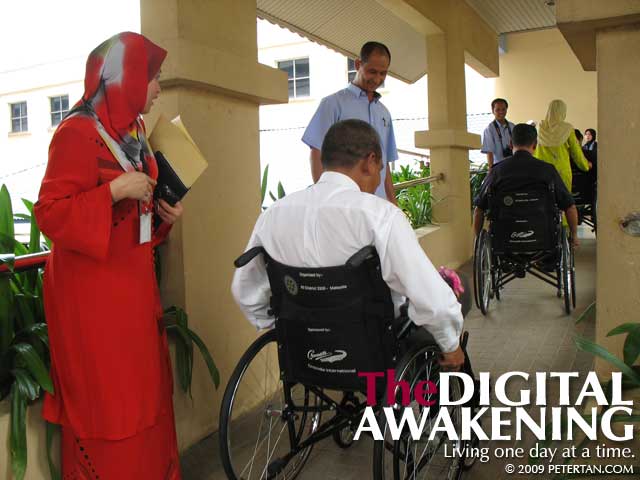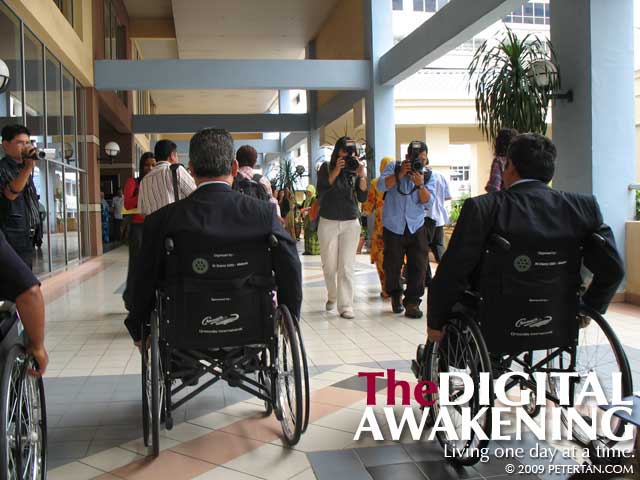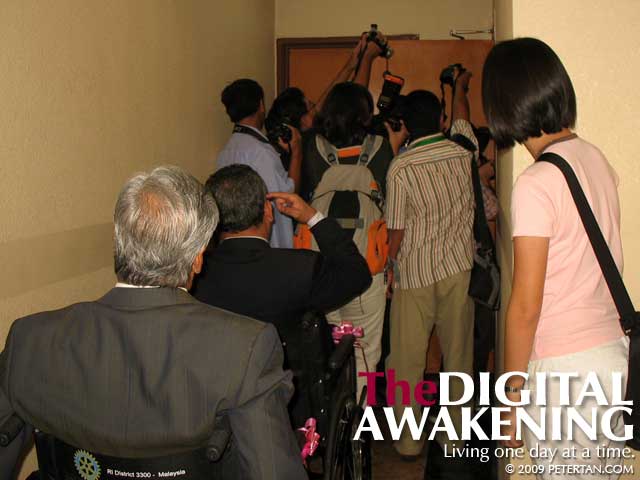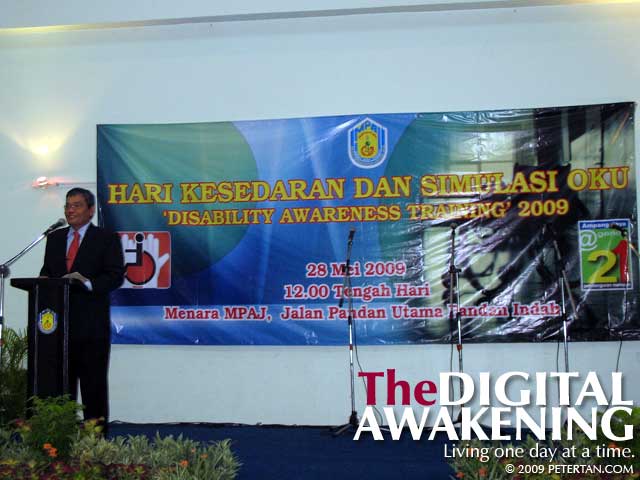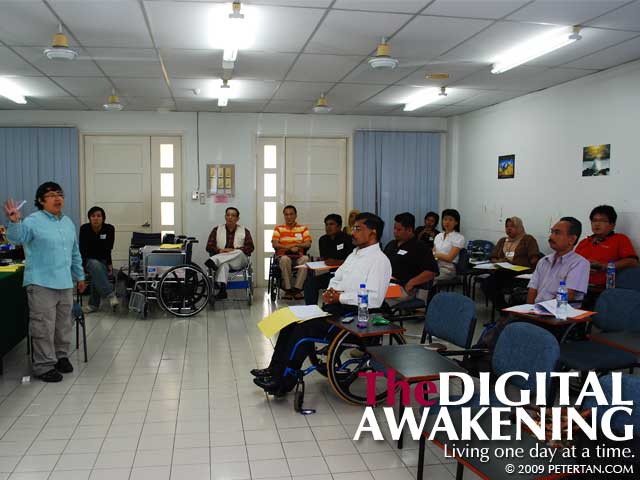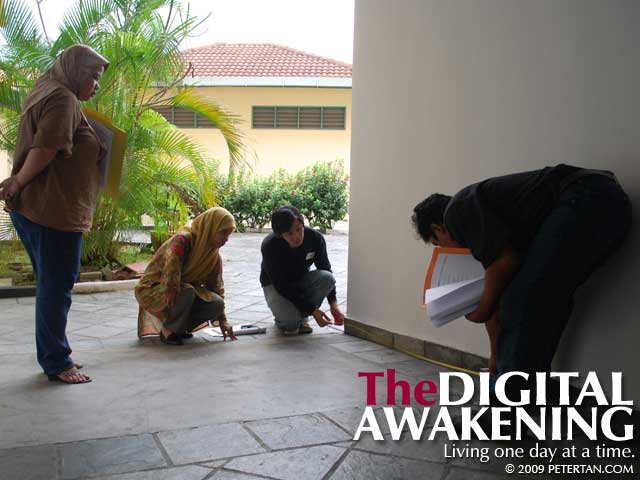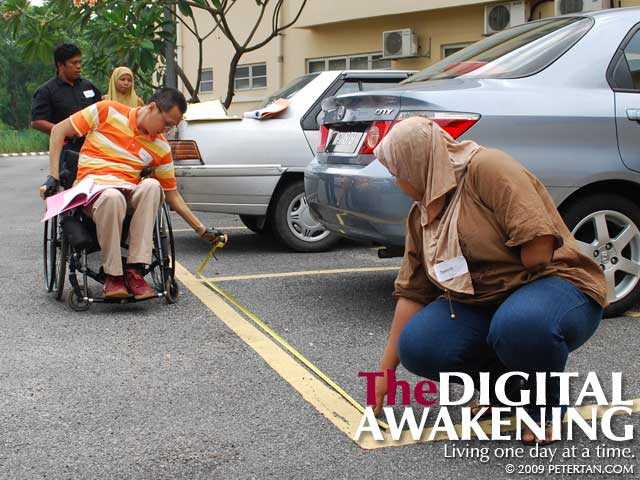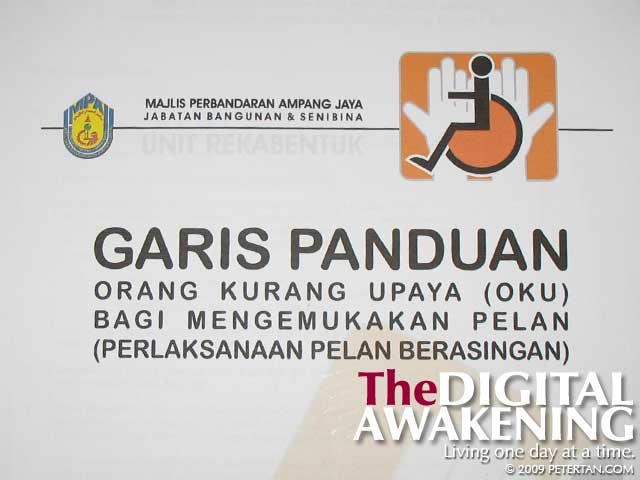
In conjunction with its Hari Kesedaran dan Simulasi OKU last Thursday, Majlis Perbandaran Ampang Jaya also launched the Garis Panduan Orang Kurang Upaya (OKU) Bagi Mengemukakan Pelan (Perlaksanaan Pelan Berasingan). Translated it means Guidelines for Plan Submission for Disabled People (Implementation of Separate Plan). In my opinion, it should have instead read as: Garis Panduan Bagi Mengemukakan Kemudahan OKU or Guidelines on Facilities for Disabled People.
That aside, I am glad that disabled people have come to this stage in our advocacy for accessible facilities in the Ampang Jaya municipality. This is a very positive step for many of us who have been looking forward to such facilities. The guidelines have a checklist and specifications on ramps, pathways and corridors, stairs, doors and entrances, elevators, toilets, lobby and car parking spaces.
The most important aspect of this implementation is the requirement for the submission of a separate plan for accessible facilities. This is to ensure that the plans comply with Malaysian Standard MS 1184 before they are approved. This guideline left out Malaysian Standard MS 1183: Part 8: 1990: Specifications for Fire Precautions in the Design and Construction of Buildings Part 8: Code of Practice for Means of Escape for Disabled People which I feel should have been included.
Teratai ADUN Jenice Lee, MPAJ Council Member Chan Su Sann and MPAJ Jabatan Belia dan Masyarakat Officer Noryani Roslan have been instrumental in pushing this matter up to this stage. Nevertheless, I will raise a few points regarding the guideline as I feel that the requirements are not comprehensive or specific enough. All said, I am happy to see progress in this matter although the moving is slow from the first time I lodged a complaint with MPAJ in 2006.

